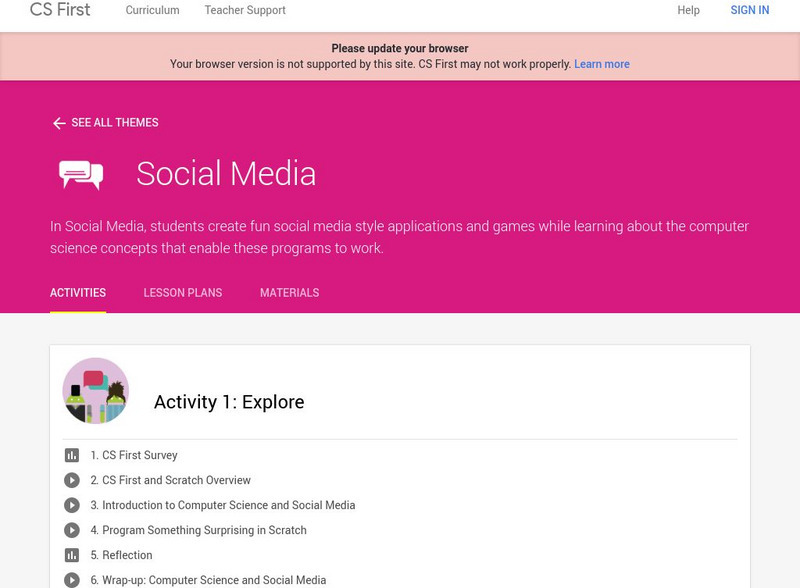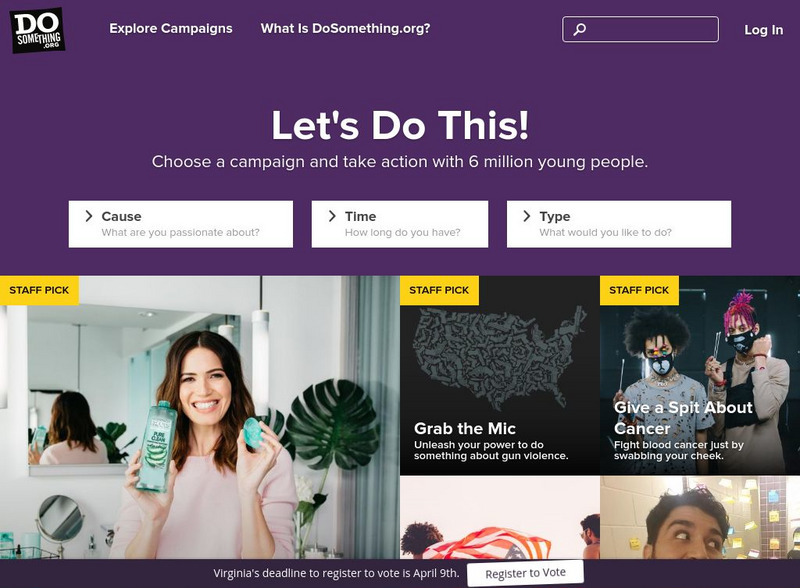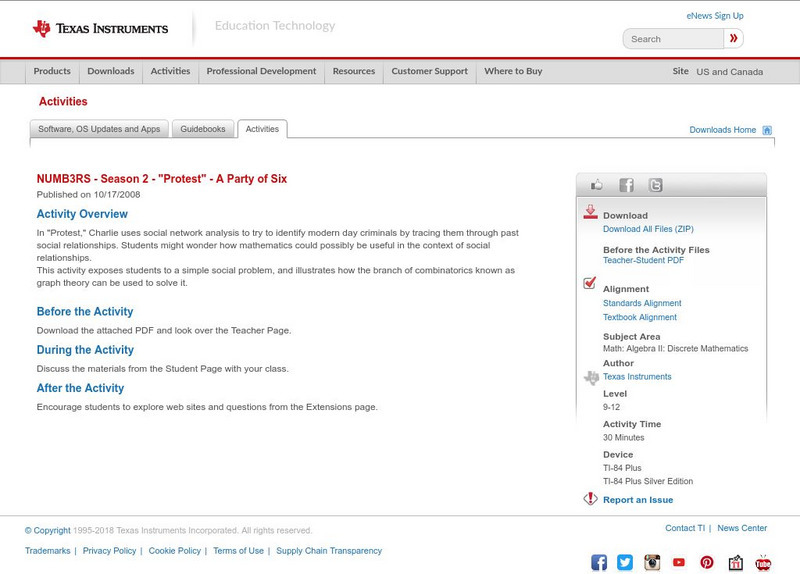TeachEngineering
Teach Engineering: Graphing Your Social Network
Students analyze their social networks using graph theory. They gather data on their own social relationships, either from Facebook interactions or the interactions they have throughout the course of a day, recording it in Microsoft...
TeachEngineering
Teach Engineering: Start Networking!
To get a better understanding of complex networks, students create their own, real social network example by interacting with their peers in the classroom and documenting the interactions. They represent the interaction data as a graph,...
Google
Cs Education at Google: Cs First: Social Media Theme
A set of eight activities that teach students basic computer science concepts using the programming language Scratch. Includes lots of additional supports for teachers. All materials are free and teachers sign in to create a class. This...
Louisiana Department of Education
Louisiana Doe: Curriculum Hub: Ela Guidebooks: Teenage Brain: Review Claims About Social Media
Review claims made in "Teens: This Is How Social Media Affects Your Brain."
TeachEngineering
Teach Engineering: Using Graph Theory to Analyze Drama
Students analyze dramatic works using graph theory. They gather data, record it in Microsoft Excel and use Cytoscape (a free, downloadable application) to generate graphs that visually illustrate the key characters (nodes) and...
TeachEngineering
Teach Engineering: Making the Connection
Graph theory is a visual way to represent relationships between objects. One of the simplest uses of graph theory is a family tree that shows how different people are related. Another application is social networks like Facebook, where a...
Other
I*earn (International Education and Resource Network)
This nonprofit organization creates structured projects that facilitate engaged learning and youth making a difference on an International scale. Project areas include interdisciplinary topics such as the environment/science,...
Other
Literacy Works: Thanks to the Web, We're Alone Together and Loving It
While this resource was developed to support adult literacy learners, it can easily be used from junior grades and up. After reading an article about how people today interact on the Internet, students complete a variety of vocabulary...
Other
Do something.org
Do Something is a nationwide network of young people who know they can make a difference in their communities and take action to change the world around them. As part of Do Something, young people are asked what they want to do to make...
Texas Instruments
Texas Instruments: Numb3 Rs: Close Encounters
Based off of the hit television show NUMB3RS, this lesson has students explore how "closely connected" a network structure is. Framed in the context of a terrorist cell, students must find which setups would allow organizations to still...
TeachEngineering
Teach Engineering: Curb the Epidemic!
Using a website simulation tool, students build on their understanding of random processes on networks to interact with the graph of a social network of individuals and simulate the spread of a disease. They decide which two individuals...
Other
Videotron: Vigilance on the Net (French)
The Internet has its share of perils. You can help your kids stay safe online and steer clear of the dark alleys of the Internet by setting clear and concise rules and maintaining a frank and open dialogue about their activities and...
Other
Social Psychology Network: Jigsaw Classroom
The "official web site of the jigsaw classroom",- a cooperative learning technique which was developed by Elliot Aronson. The jigsaw approach is considered to promote better learning, improve student motivation, and increase enjoyment of...
Texas Instruments
Texas Instruments: Numb3 Rs: A Party of Six
Based off of the hit television show NUMB3RS, this lesson use graph theory to examine social network analysis. Students form complete graphs with different colored edges (representing acquaintance or non-acquaintance), and determine how...
Khan Academy
Khan Academy: Sociology of Participation
Read the passage "Sociology of Participation" and then complete the six-question quiz.














